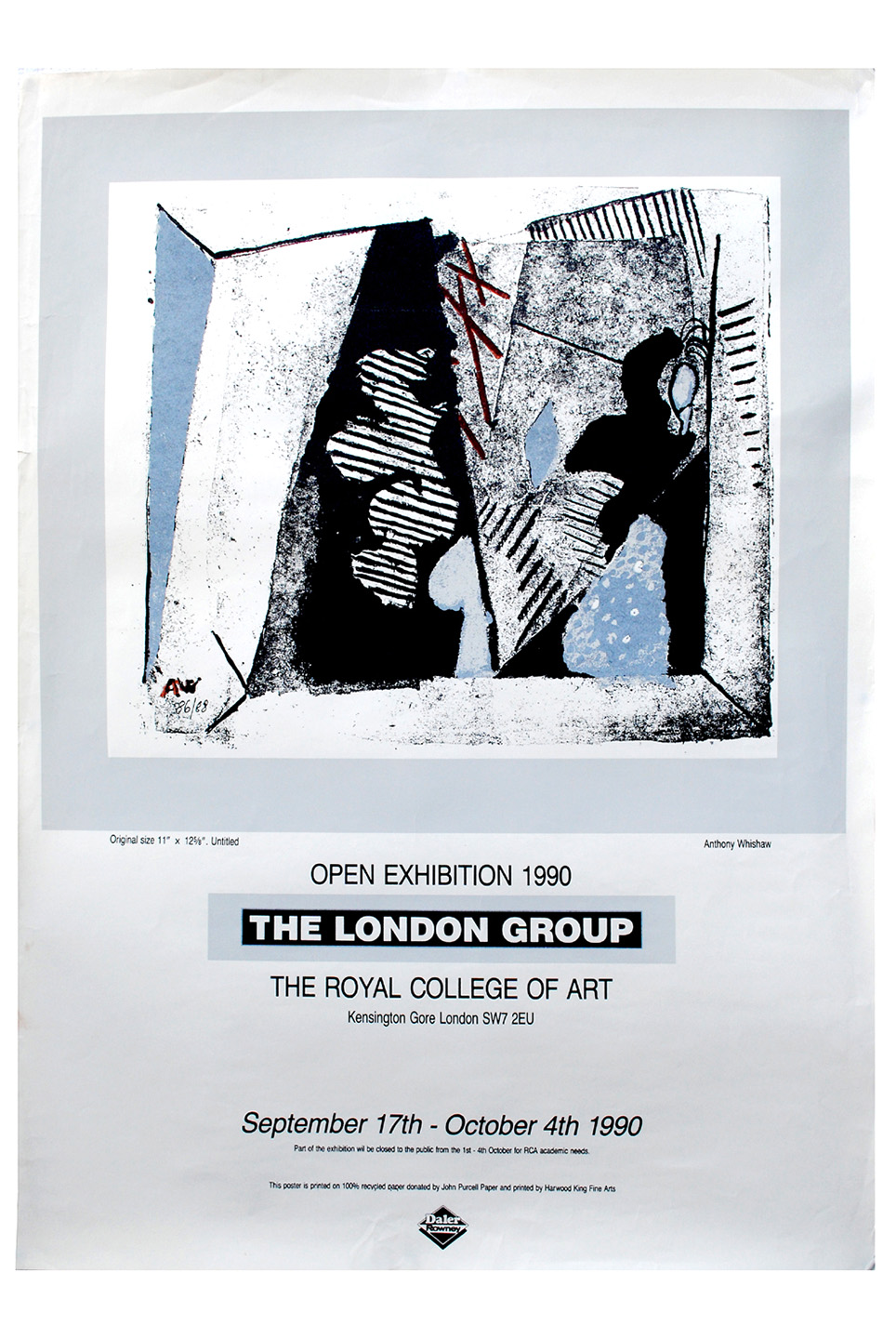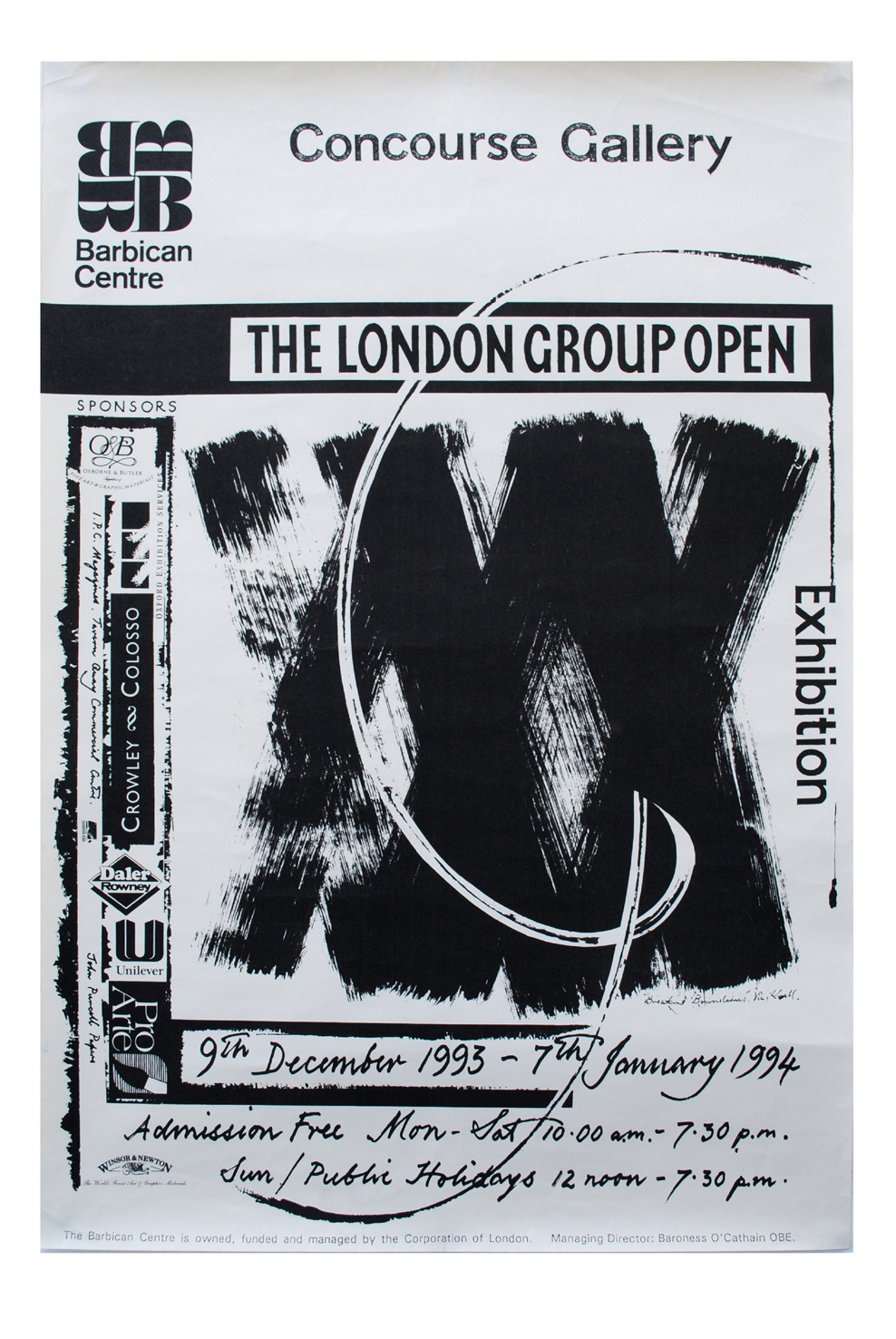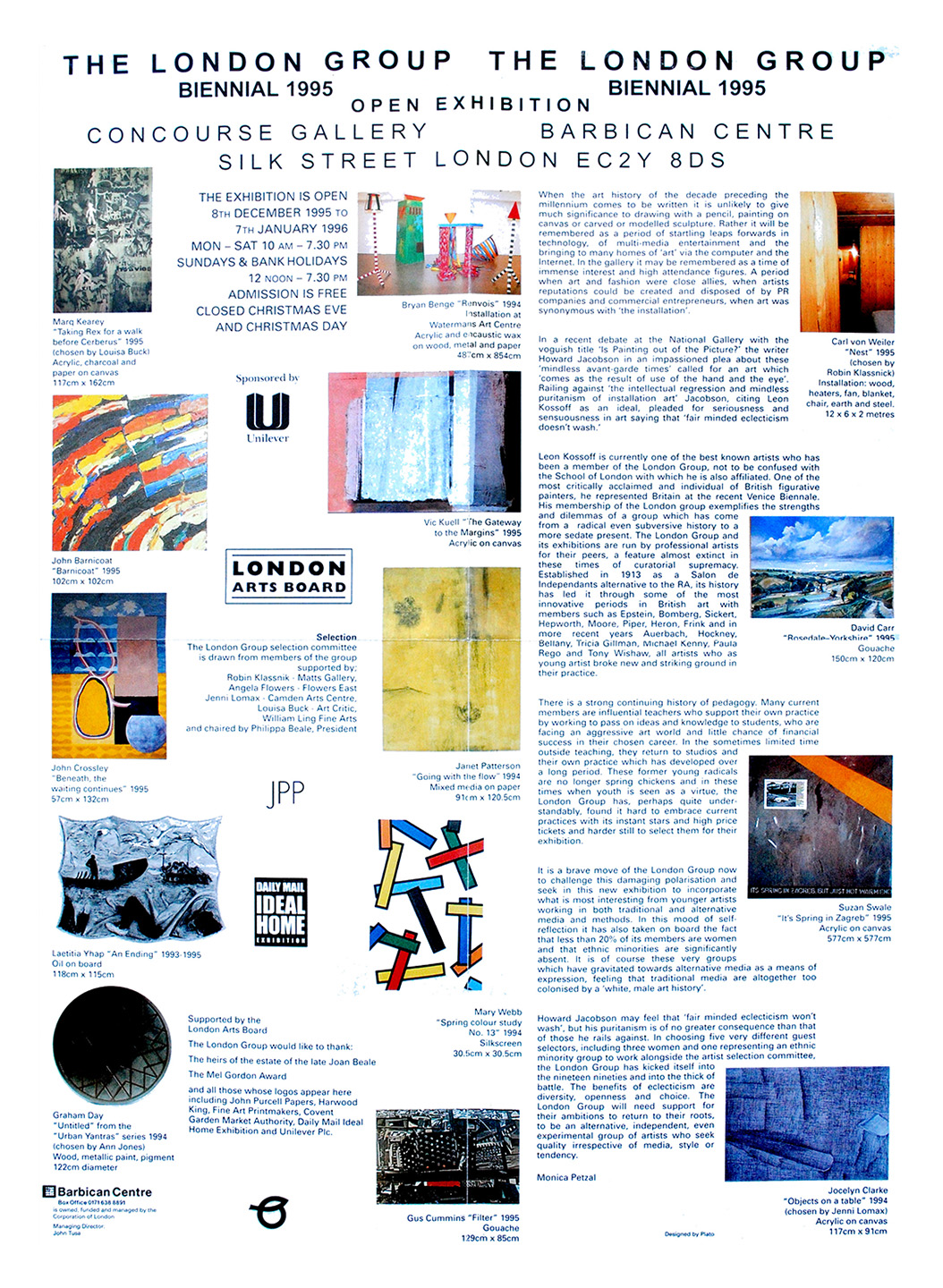By our Archivist, David Redfern
The first exhibition held by members of The London Group was in March, 1914, but as everyone knows the First World War followed soon after and the normal pattern of life changed completely. Many men from the Group left to support the war effort leaving Goupil Gallery owner and London Group supporter William Marchant struggling to fill his walls. The answer was to invite non-members to exhibit, the first occasion being the Group’s fourth exhibition in June,1916. This was an opportunity to involve more women in the Group’s activities and included Nina Hamnett, Cicely Stock, Ruth Doggett and Helen Saunders. A number of other exhibitions including member invitees took place before the Second World War but the annual focus was very much on fully paid up members.
It was after World War 2 and the 1950s which saw the golden decade of open submission exhibitions under the presidency of Claude Rogers. These huge and popular exhibitions were made possible by the availability of affordable, cavernous exhibition venues such as the New Burlington Galleries, the RBA Galleries and the Art Federation Galleries. The largest post-war exhibition organised by the Group was the “London Group Annual Exhibition” at the RBA Galleries in Suffolk Street in May, 1956, when 405 items were displayed including drawings, sculptures and paintings. The send in was so huge the selection had to take place in a local gymnasium with only those works being accepted transported to Suffolk Street. There were 240 non-members exhibiting including Frank Auerbach, Gillian Ayres, Prunella Clough, Patrick George, Mary Martin, Dorothy Mead, Margaret Mellis, Yolanda Sonnabend and many, many more, a large number of whom would eventually be elected to full membership.
The Royal Academy was the venue for the next open submission, “London Group1971, Members’ Choice Exhibition” with a catalogue preface written by the Group’s first woman president, Dorothy Mead. She wrote, “The second exhibition of the London Group at Burlington House takes much the same form as last year, as the limited space of the Diploma Gallery makes it necessary for us to modify our usual plans for an open exhibition. I regret this limitation but suggest that it is offset by the very specific value of the non-member’s work here, each one of which has been sponsored by an individual member of the group. We do hope to find ways of promoting a large open exhibition as a regular event in the future.”
The year 1984 was the first recorded use of the word ‘open’ in an exhibition title, “London Group ’84: Open Exhibition” held at the Royal College of Art in November under the presidency of Stan Smith. Thereafter there were intermittent open exhibitions punctuated by “The London Group and Guests” exhibitions as finance and affordable rented space became available.
The Concourse Gallery in the Barbican Centre was the venue for two important open exhibitions, intended to be biennial events. The first, under Adrian Bartlett’s presidency, opened in December, 1993 and the second, under Philippa Beale’s presidency opened in December, 1995. They were ambitious and logistically difficult to organise especially as all those concerned in the organisation of these exhibitions were volunteers.
In the ‘modern era’ it was 2007 before the Open was revived under the presidency of Susan Haire after a break of fifteen years. The Menier Gallery was the venue for “The London Group Open 2007” held in two parts to accommodate the large numbers involved. There was a further Open at Menier in 2009 but 2011 saw the circus move to the Group’s spiritual home at the time, The Cello Factory in Waterloo. “The Centenary Open 2013” took place in the Waterloo gallery followed by open submission exhibitions in 2015, 2017 and 2019 when the pandemic of 2020 destroyed the impetus. Parker Harris have recently been hired to facilitate the submission process which brings professional and efficient support for application to London Group Opens. It was becoming impossible for volunteer officers of the Group to manage such a complicated process as submission numbers began to climb. The Group takes a financial gamble that submission fees will largely cover all the costs of organising an Open, but it is a gamble well worth taking to deliver the Group’s constitutional requirement to “advance public awareness of contemporary visual art by holding exhibitions annually”.
David Redfern LG, 2023



